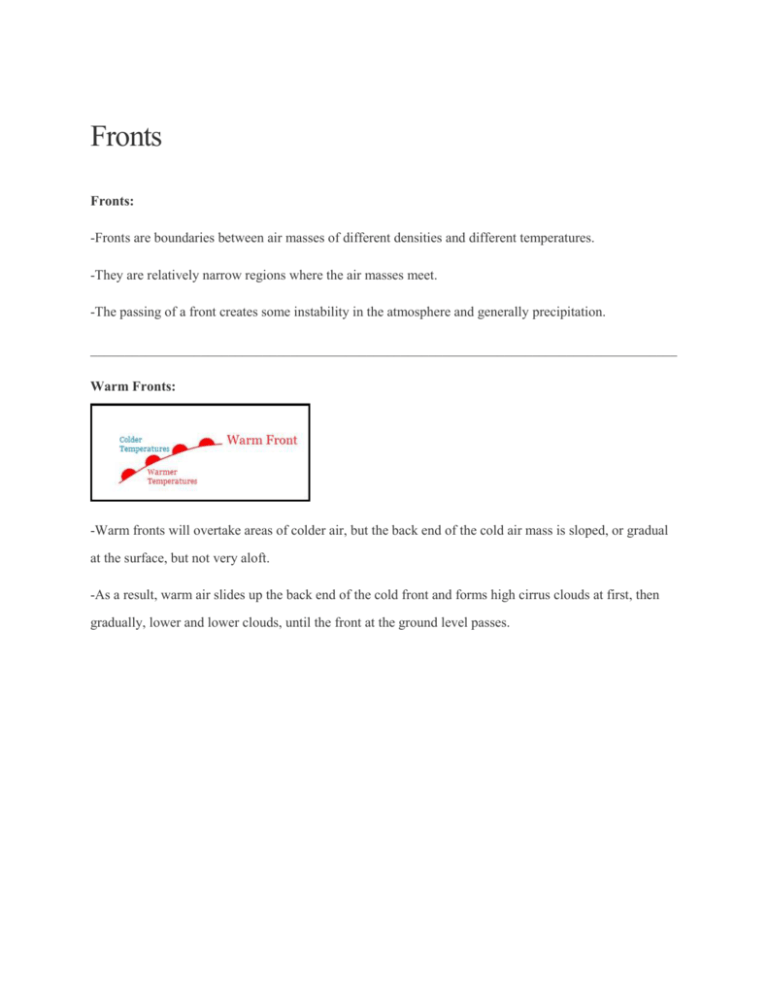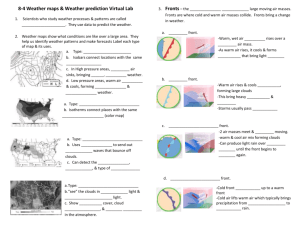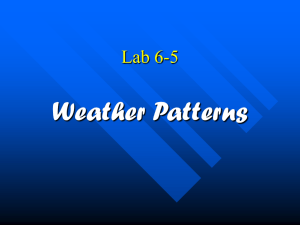Cold Front - WordPress.com
advertisement

Fronts Fronts: -Fronts are boundaries between air masses of different densities and different temperatures. -They are relatively narrow regions where the air masses meet. -The passing of a front creates some instability in the atmosphere and generally precipitation. _____________________________________________________________________________________ Warm Fronts: -Warm fronts will overtake areas of colder air, but the back end of the cold air mass is sloped, or gradual at the surface, but not very aloft. -As a result, warm air slides up the back end of the cold front and forms high cirrus clouds at first, then gradually, lower and lower clouds, until the front at the ground level passes. -Because they take a long time to take over an area, warm fronts are usually associated with moderate precipitation over longer periods of time. -The temperature increases and the winds change direction, usually from east to southwest. -The amount of moisture, the stability of the air mass, and the difference in temperature of the air mass it is overtaking all play a role in the development of the weather with the passing of a warm front. _____________________________________________________________________________________ Cold Front: -Cold fronts are significantly steeper than warm fronts. This is because friction slows the surface position of a cold front as it moves, making it so steep. -Cold fronts generally move faster than warm fronts. -For both of the reasons above, cold fronts force the warmer air it displaces up in short amounts of time, forming clouds of vertical development and more violent weather. -During summer months, cold front passage means very violent weather. This is because as the warm air is forced upward and as latent heat is released, it continues upward, forming large, unstable clouds (cumulonimbus), which will produce turbulent weather. -During winter months, a cold front passage means precipitation along and close behind the front. It will generally bring cool, subsiding air behind it. These are cold continental polar air masses of high pressure. _____________________________________________________________________________________ Stationary Front: -A front that is the result of air moving parallel to the air masses it sits between. -This front, as the name implies, does not move very much, if at all. -Usually overrunning of air occurs, and also precipitation. -If a stationary front stays stationary for a long enough time, with precipitation, flooding may occur. _____________________________________________________________________________________ Occluded Front: -Occluded fronts occur when a rapidly moving cold front overtakes a warm front. -These fronts form as a result of a mature/late stage cyclone. ____________________________________________________________________________








